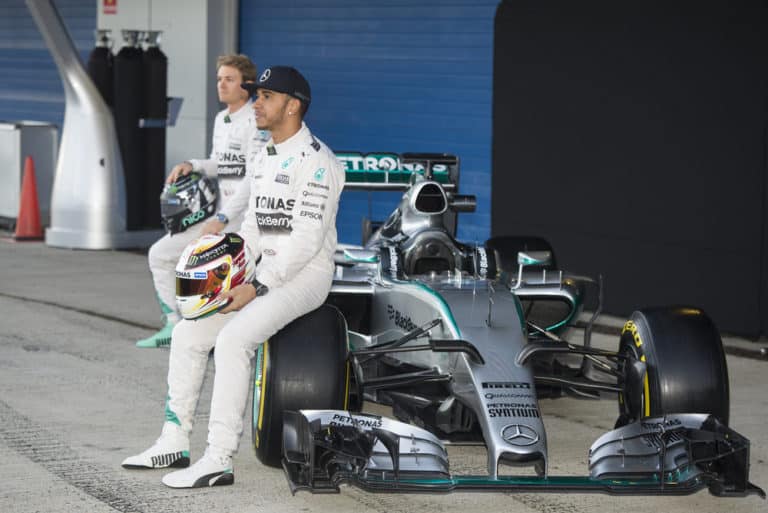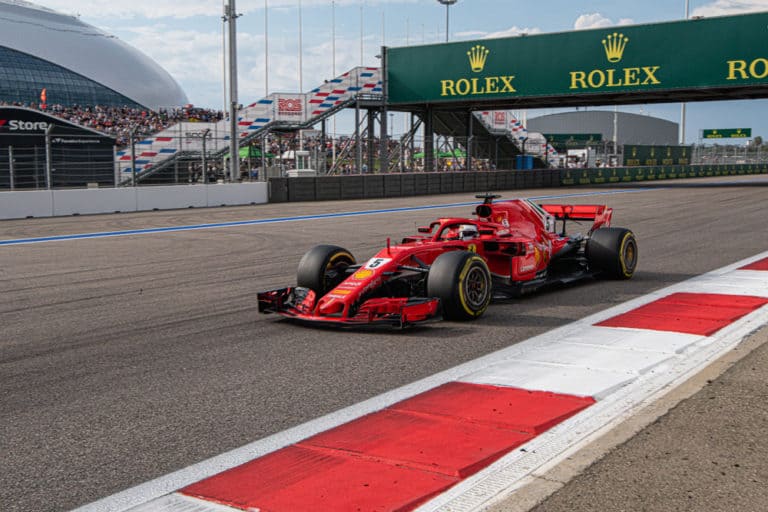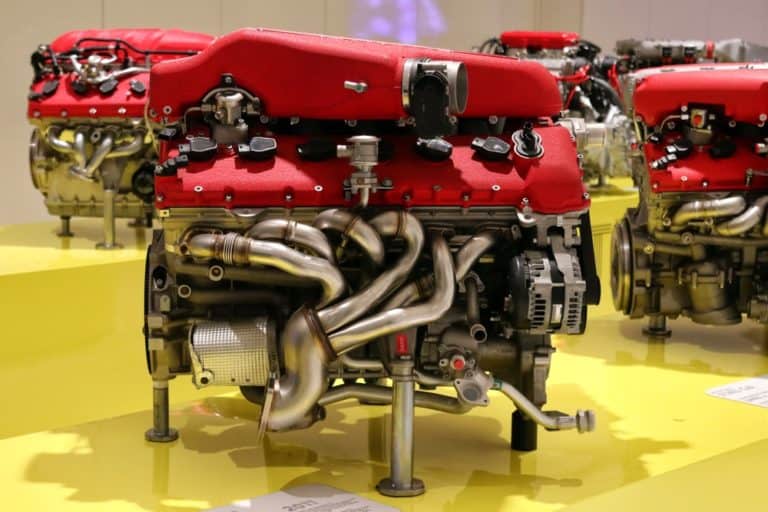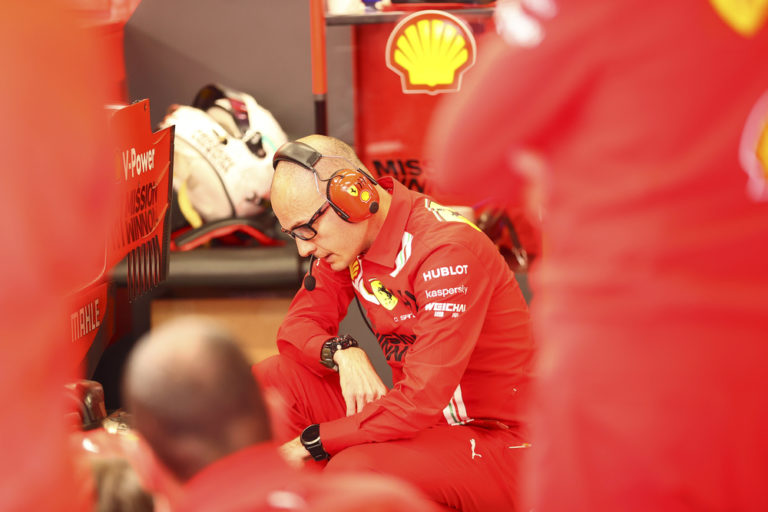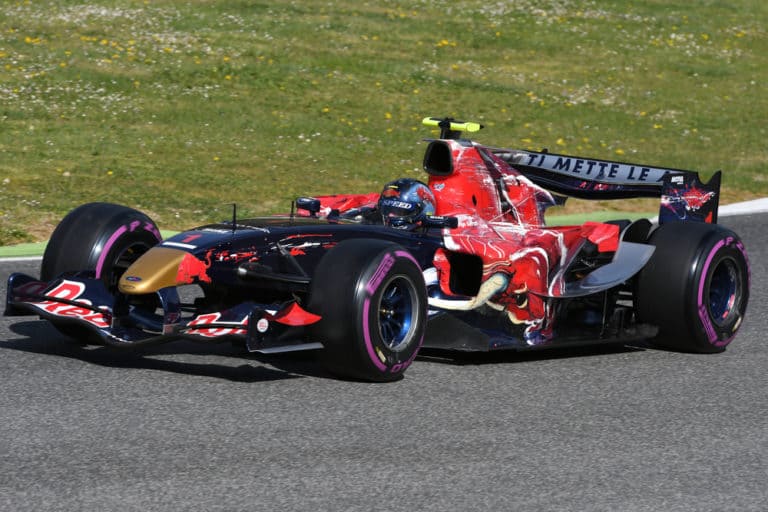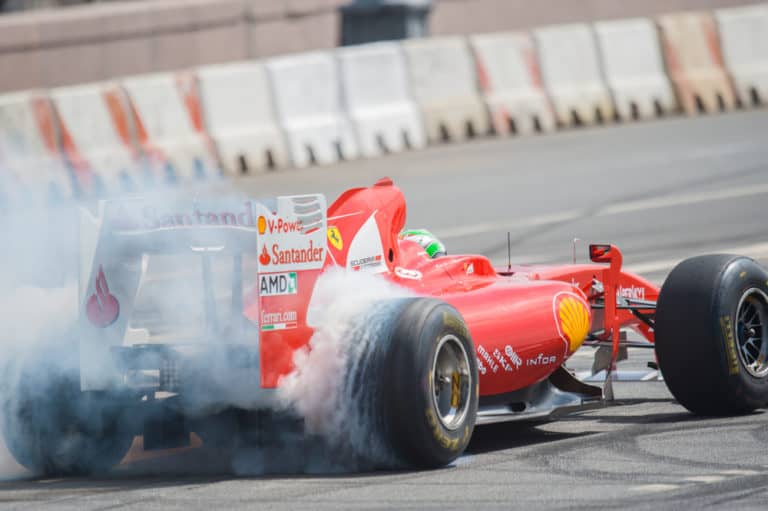Image: Shutterstock.com
As a big motorsport fanatic, an avid supporter of basically any sport that includes wheels and an engine, I follow Formula 1 religiously, and even though I have seen some form of drifting, it is definitely not the norm.
Formula 1 cars can drift. However, they are set up to stick to the track, and you will rarely see it occur as drifting equates to a loss of speed and acceleration, damages the tires, and is a dangerous maneuver. When you see a Formula 1 car drifting, it’s either through a driver error, a sign that the tires have lost their grip, or has a hotspot and needs to be replaced.
Nothing beats the sight of a racing car proceeding to drift into a corner, fighting all kinds of laws of physics, aiming to make it out in one piece, just to accelerate away and to do it all over again. Colin Mcrea destroyed rally tracks in his Subaru, Ken Block destroyed streets in his Gymkhana series. In Formula 1, however, the drivers do not need the skills of a Mcrea or Block; the first thing a new Formula 1 driver needs to learn is how not to drift.
Drifting and Formula 1 cars
Every car, at any speed, when going through a corner, has a slip angle of the rear and front tires. If the slip angle of the back tire is big, it is referred to as having oversteer or drifting.
In Formula 1, “drifting” really refers more to the slight lateral sliding when pushing the car to the utmost limits. It does not refer to the extreme drifting you will encounter at a rally or when watching” Fast and the Furious: Tokyo Drift.” Sustained over steering, slides through corners, and overworked and smoking tires are not what you will usually see on a Formula 1 track.
The limits of a Formula 1 tire is much more abrupt than that of a rally/drift car. What this means is that while drifting, the tire will lose traction much easier, sliding out, as a result, leaving the driver with little to no control. Drifting is also made less possible due to the cars being designed to produce more downforce than the weight of the car.
Formula 1 tires provide great grip on the asphalt track; if you combine this with the high downforce engineered during a race, add the explosive acceleration provided by the turbochargers, you will find that the exit speed out of a corner is way faster when the driver is in control. Performing a drift maneuver will make all of the above improvements null and void.
So it seems that the slight drift that you sometimes see when drivers are pushing their cars to their limits should not be referred to as drifting. It’s more of a slight lateral slide or power slide.
A perfect corner in Formula 1 would be to maintain contact to the road with no wheel spin, no loss of traction, and tires pointing in a forward position (racing line), and accelerating out of the apex of the corner onto the straight part of the track. With little to no damage to the tire.
Why Formula 1 Cars Should Not Drift
Let’s face it, drifting, and racing go hand in hand. We as fans enjoy seeing cars enter corners at the optimal drifting angle, where the racer either controls the car expertly or ends up in a ditch or against a barricade.
Formula 1, on the other hand, is a different ballgame altogether. The goal in this sport is to stay on track at the fastest speed possible, using the racing line as a compass. Let’s examine the main reasons why Formula 1 drivers choose not to drift during races.
- Constantly over spinning (drifting) wheels around corners means less speed and acceleration. Formula 1 is a sport where a fraction of a second can make the difference between winning and losing. Drifting corners will make you lose valuable seconds.
- Formula 1 teams spend millions of dollars annually on the design of their cars. The cars are designed to deliver extreme downforce so that the car basically sticks to the track, minimizing the chance of the cars sliding and drifting through corners, losing precious time.
- The quickest and easiest way to damage the gearbox and the engine is by constant wheel spinning. Drifting increases the spinning of the wheel considerably and puts extra pressure on the engine. Take into consideration that if a team needs to replace an engine or gearbox before race day, they will incur harsh penalties, normally the dropping of grid places.
- Formula 1 cars are powerful machines; they produce tremendous torque, their power to weight ratio is insane, and they have all the ingredients to destroy a tire in seconds. This happens under normal circumstances all the time. When you add drifting to this volatile mix, it becomes a lot more dangerous as a sport. Drifting overheats the tires and could lead to them exploding.
- The single most important duty of a Formula 1 driver is to manage and protect their tires. Just a few incidents of locking up their wheels could cause a hotspot to develop on the wheel. This normally makes the car un-drivable. Drifting will damage the tires considerably, and the extra pit stops will ruin your race.
- Drifting wastes fuel. Teams are allowed to fill their tanks with enough petrol to finish the race. No pit stops for refueling are allowed; drifting will waste fuel and could lead to teams not finishing the race.
- It’s dangerous. The nature of Formula 1 racing is cars racing toe to toe, fast speeds, racing lines, and overtaking maneuvers. Imagine every car using drifting as their preferred cornering style. There would be accidents galore and safety cars deployed for most of the race.
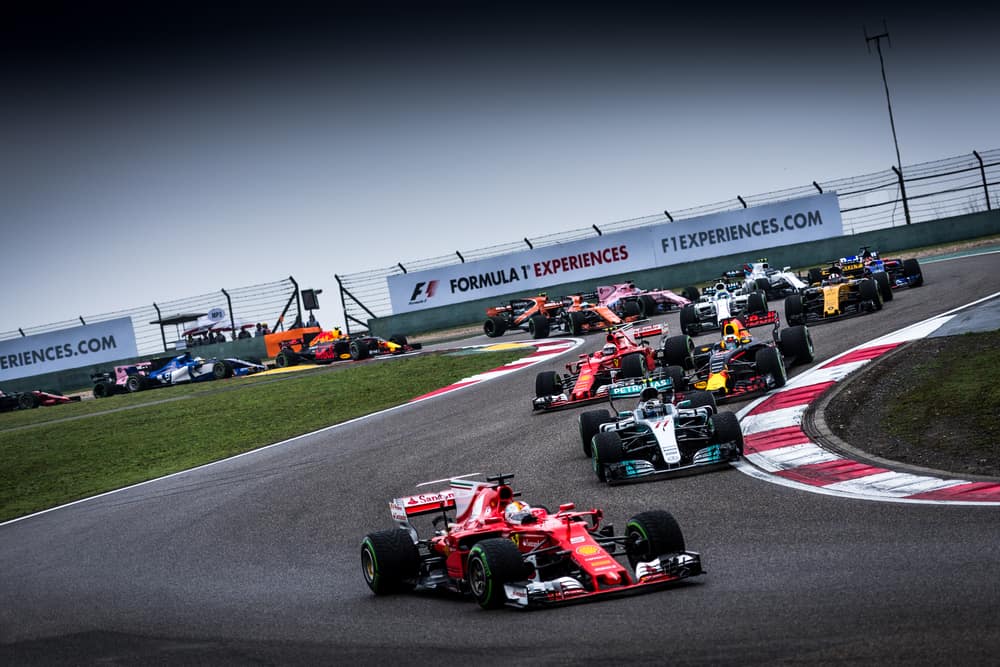
What would be the end result if all the drivers drifted in a race?
Imagine if all the drivers decided to start drifting come race day, it would be so entertaining, right? Think again. This is likely the scenario that would unfold for us watching the race.
- Accidents galore. Collisions will be frequent as drivers are racing very close to each other during the race. It’s all about control in the corners as to not smash into each other. Throw drifting into the mix, which is a hard to control skill, and you will have many pileups and crashes.
- Deployment of Safety Car on a very regular basis. After each pileup or crash, as a matter of fact. Most of the race would be spent watching the cars still on the track, following at a subdued pace while the debris is being cleared by officials. Boring if you ask me.
- Formula 1 discontinued as it will not be in line with driver and spectator safety regulations. There will be constant lawsuits and too much drama.
- Deaths will occur. Formula 1 is a high-speed sport; some drivers have been clocked at 320 km/h and need open tracks to race as it is already a volatile arena when there are no accidents or crashes. There have been many on-track deaths over the years, and that is why there are so many rules and regulations to protect drivers and even the spectators.
Related Questions
We have covered the question of whether Formula 1 cars can drift, but here are some more interesting things you might not know about the racing world.
Is Formula 1 harder than rally?
This is a difficult question to answer. I would say yes, rally cars operate more like an ordinary beefed up car. For us normal folk, it will be much harder to learn how to drive a Formula 1 car compared to a more “normal” rally car.
Is rally more dangerous than Formula 1?
Yes. Formula 1 is governed by all sorts of rules and regulations geared to ensuring the safety of their drivers. Rally has more events and participation around the world, unfortunately adhering to safety regulations does not happen at all these events. Rally has more annual deaths and injuries compared to Formula 1.
Conclusion
Can Formula 1 cars drift? The simple answer is yes. Should Formula 1 cars drift? The simple answer is no.
Formula 1 as a sport has outgrown drifting and is more focused on keeping the car glued to the track. Cornering is now done at optimal speed and direction, maximizing acceleration and grip, and by looking after the tires. Drifting has no place in Formula 1 as it goes against all the enhanced engineering that has taken place in motor racing over the last several decades.
Luckily for us, there are still plenty of rallies and gymkhanas for when we want to indulge in cars burning up rubber and pushing slip angles to the max!

